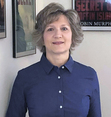Honoring with Bags of Sand and Candles/2009
Thermal socks…check. Thermal underwear…check. Wind and rain-proof coat, boots, scarf, and gloves…check. Feeling as though I had all that was needed, I headed to the field with my nail clippers and lighter.
The gang was beginning to arrive as I saw the first grid line of paper bags straight as an arrow run up the hillside. The rain had turned to a mix of snow and the wind blew it sideways. I headed toward the wheel barrel and grabbed as many bags as I could and began to drop them beside the pieces of marked gray tape wrapped around the bright orange chord.
This is an understood process that my husband and I have been doing for the past seven years. We had been asked to join a group from Main Street Arts, close friends of ours, in 2002. We had the opportunity to witness the glowing bags on the battlefield that first Saturday in December of 2001. It was our first year of living in Sharpsburg, MD. But nobody prepared us for the fulfillment of laying down close to a thousand bags filled with sand and candles representing 23,110 casualties of the Battle of Antietam on September 17, 1862.
Our group was asked to take on a new field this year around the MD monument, which we proudly volunteered for, and began calling upon friends for help. We knew this would be a large task, but we were ready for the mission. We listened to instructions from our trusty leader, Dave LeMarie, and went to work dropping the sand-filled bags with candles.
The next step in our process was to open the bags, clip the wicks with our nail clippers, and place the candles squarely in the sand. After the first line of forty bags I began to feel my knees and back ache and my gloves became soaked through from the wet snow.
We continued on. We didn’t give up until the last bag was dropped. Maybe it was because of the gratification of knowing what we were doing. Or, it could have been the fact it was time for lunch and we knew there was warm soup and chili awaiting us back at command central, Dave and Annie’s place.
As our group slowly filtered in for lunch, we shared our stories of frustration with the weather. The wind was picking up and we were concerned how our next step was going to pan out…the lighting of the candles. We patted each other on the backs for sticking with it and warmed ourselves with great food, warm coffee, and wassail. We took turns throwing wet clothing into the dryer and relaxed until we had to go back out and fight the elements.
It’s a grand expectation for this event each year. You get to visit with old friends and meet new. The group has grown each year, and we always rally around the TV to watch the traditional college football game. As the afternoon continues and we are sufficiently refueled, we begin the ever-long process of donning on our layers of clothing. We receive our parking passes for our vehicles, and head back out to our field to light the candles.
Upon arrival, we notice the snow covered bags and wonder how we will keep them open. We cuff the top edges over and begin lighting the wicks. The lighters stop working as they freeze from the wet snow. We feverishly keep trying but the wicks slowly die out and leave us with unlit candles and disappointment. Some of us continue relighting them, but others of us have lost the will and head back to our cars to again thaw our bodies and dry out our attire.
While waiting for our car-load to return, we learn the ceremony of dignitaries has been changed to take place inside the Visitor’s Center. We decide to head back to command central without passing through the routine volunteer review. We are torn because we know what this represents. We compare what the conditions would have been for those men of the blue and gray in September of 1862. It may not have been in the rain and sleet, but nonetheless, they wouldn’t have given up. They would have dredged on to fight for what they believed in. But we believed we did the best we could given the circumstances of the weather.
We return to command central to defrost for the final time. We again share our stories of the weather breaking our will to keep the candles lit and weren’t sure how many actually remained aflame. A final decision was made to drive through the battlefield when we were finished with dinner and visiting. I suppose it was an inner drive to keep the tradition going of what we do every year and the magic of seeing the battlefield all aglow.
When the evening is over, I return home after a long, cold, wet, and exhilarating day. I hang up my coat knowing I won’t have it on again until the next first Saturday in December. I place my boots, scarf, and gloves on the radiator to dry and plop myself into bed. My cheeks are still a bit cold and chapped, along with my lips. My toes and fingers are still thawing out as I smile into the dark knowing yet again, for another year, I’ve done my best to give representation of the sacrifice of those men back in ’62. It’s such a small and simple thing to do for that one day out of the year.



